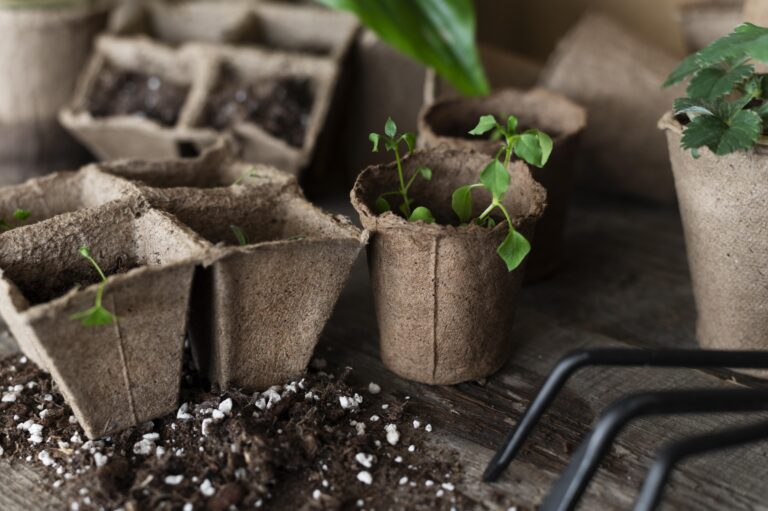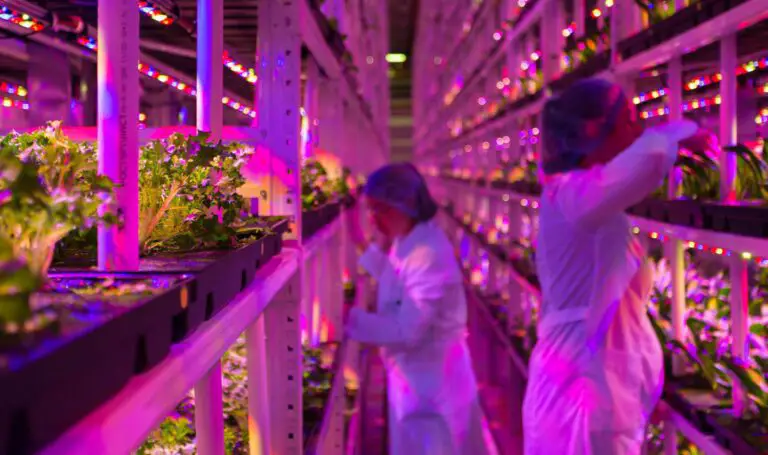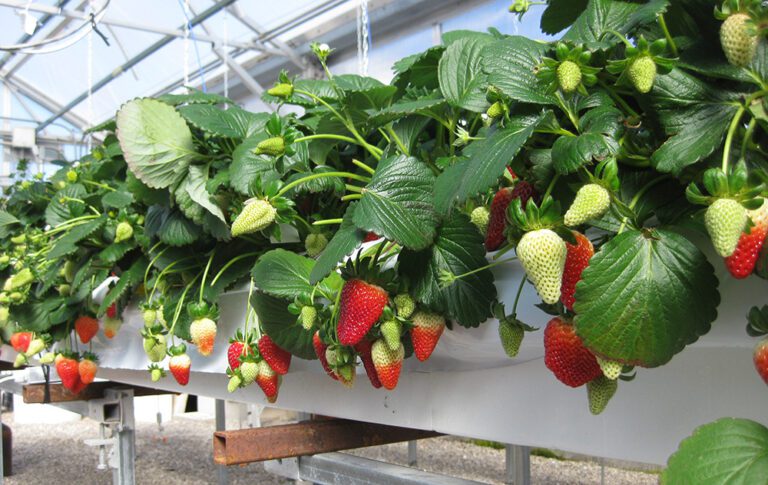Aquaponics vs Hydroponics: Which One is Better for Your Plants and the Environment?
What is Aquaponics and How Does it Work?
Table of Contents
Aquaponics is an innovative and sustainable method of agriculture that combines aquaculture and hydroponics to create a mutually beneficial system. In this system, fish are raised in tanks while plants are cultivated in water-based beds without the need for soil. The key to this symbiotic relationship lies in the natural processes that occur within the system.
First, the fish produce waste, primarily in the form of ammonia. This waste-rich water is then directed to the plant beds, where bacteria naturally convert the ammonia into nitrates. These nitrates serve as a valuable source of nutrients for the plants, facilitating their growth. As the plants take up the nutrients, they purify the water, returning it back to the fish tanks clean and oxygenated. This closed-loop system minimizes water waste and creates a cycle of nutrient recycling, making aquaponics both environmentally friendly and resource-efficient. By harnessing the power of nature, aquaponics offers a sustainable solution for growing both fish and plants simultaneously.
Understanding Hydroponics and its Benefits
Hydroponics, one of the most innovative and efficient methods of growing plants, has gained significant popularity among gardening enthusiasts. Unlike traditional soil-based gardening, hydroponics involves cultivating plants in nutrient-rich water, without the need for soil. This method offers a plethora of benefits that make it an attractive option for both commercial farmers and home gardeners alike.
One of the key advantages of hydroponics is its ability to maximize plant growth and yield. By providing plants with a precise balance of nutrients directly to their roots, hydroponics eliminates the competition for nutrients that often occurs in soil-based gardening. This results in faster growth rates, larger plant sizes, and higher crop yields. In fact, studies have shown that hydroponics can produce up to 30% more crop yield compared to traditional soil-based methods. Moreover, the controlled environment in hydroponics helps to optimize factors like temperature, humidity, and pH levels, further enhancing plant growth and productivity.
The Environmental Impact of Aqua police
Aquaponics is a sustainable and environmentally-friendly method of farming that has gained significant attention in recent years. One of the key advantages of aquaponics is its minimal impact on the environment. Traditional farming practices often involve the use of chemical fertilizers and pesticides, which can lead to soil degradation, water pollution, and harm to surrounding ecosystems. In contrast, aquaponics utilizes a symbiotic relationship between fish and plants, where the fish waste provides the necessary nutrients for plant growth. This closed-loop system drastically reduces the need for synthetic fertilizers, making aquaponics a more sustainable and eco-friendly option.
Additionally, aquaponics systems require significantly less water compared to traditional farming methods. In a conventional farm, water often evaporates or seeps into the soil, resulting in wastage. In contrast, aquaponics recirculates the water within the system, allowing plants to consume only the water they need. This efficient use of water not only conserves this precious resource but also minimizes the strain on local water sources. Moreover, the water in aquaponics systems remains free from harmful chemicals, as no pesticides or herbicides are used. This prevents contamination of groundwater and nearby water bodies, ensuring the preservation of aquatic habitats and biodiversity.
In conclusion, the environmental impact of aquaponics is undeniably positive. By eliminating the need for synthetic fertilizers, reducing water consumption, and preventing pollution, aquaponics offers a more sustainable alternative to traditional farming. Its closed-loop system promotes the protection of natural resources and the preservation of ecosystems. As we continue to face the challenges of climate change and depletion of natural resources, aquaponics offers a promising solution for sustainable agriculture and a greener future.
Analyzing the Environmental Benefits of Hydroponics
Hydroponics, a soilless method of growing plants, offers a range of environmental benefits that make it a sustainable and eco-friendly gardening alternative. One of the key advantages of hydroponics is its efficient use of water resources. Compared to traditional soil-based cultivation, hydroponics requires up to 90% less water, as it recirculates and reuses the nutrient-rich solution that nourishes the plants. This not only reduces water consumption but also minimizes the strain on local water supplies, especially in regions facing water scarcity.
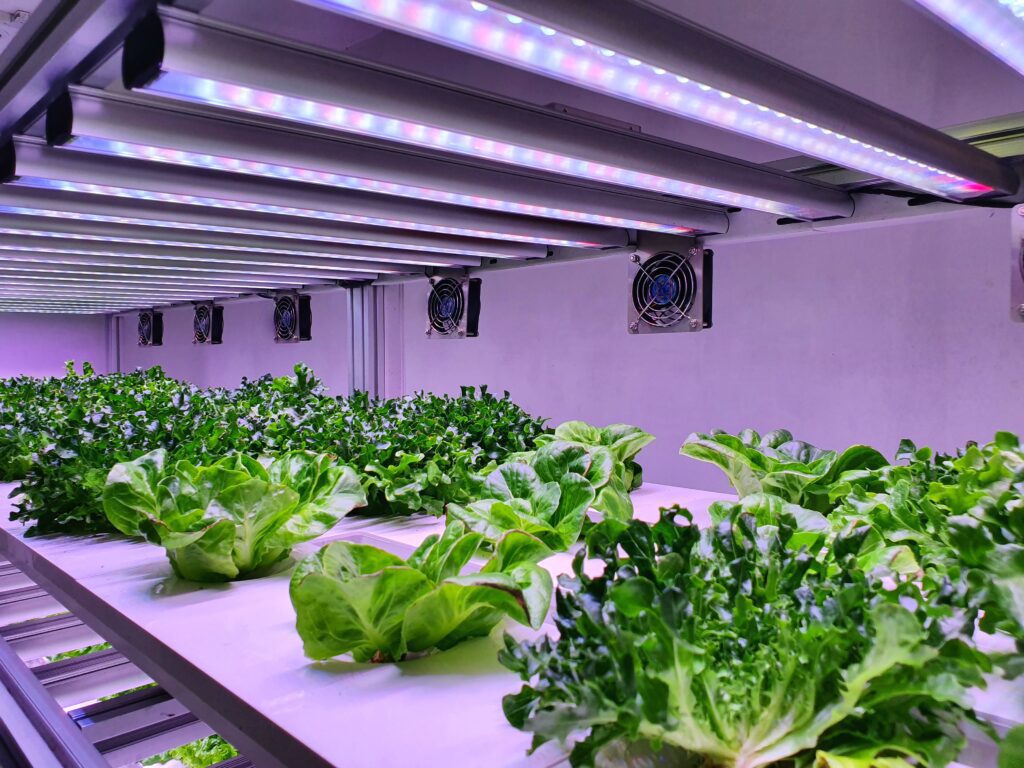
Additionally, hydroponics eliminates the need for pesticides and herbicides, resulting in a significant reduction in chemical runoff and soil contamination. By providing a controlled environment, hydroponic systems offer natural pest and disease control, reducing the reliance on harmful chemicals that can have detrimental effects on ecosystems. As a result, hydroponics minimizes air and water pollution, creating a cleaner and healthier environment for both plants and humans. Moreover, the precise monitoring and management of nutrients in hydroponic systems ensure that plants receive optimal nutrition, maximizing growth and yield while minimizing waste and fertilizer runoff into water bodies.
These environmental benefits of hydroponics have far-reaching implications for the future of sustainable agriculture. As concerns about water scarcity, pollution, and climate change continue to grow, hydroponics presents a viable solution to minimize the ecological impact of food production. By adopting this innovative cultivation method, we can cultivate crops efficiently, conserve water resources, and mitigate pollution, contributing to a more sustainable and environmentally responsible approach to gardening. With these advantages in mind, it becomes clear why hydroponics is gaining popularity among environmentally-conscious gardeners and farming communities alike.
Comparing the Nutritional Value of Aquaponics-grown Plants
Aquaponics is a sustainable farming method that combines aquaculture and hydroponics. By cultivating fish in a controlled environment and using their waste as a nutrient source for plants, aquaponics creates a mutually beneficial ecosystem where both plants and fish thrive. But how does this method affect the nutritional value of the plants that grow in aquaponic systems?
Studies have shown that aquaponics-grown plants can have higher nutritional value compared to traditional soil-grown plants. The controlled environment in aquaponics allows for precise monitoring of nutrient levels, resulting in plants that are rich in essential vitamins and minerals. For example, a 2015 research published in the journal Food Chemistry found that lettuce grown in aquaponic systems had higher levels of vitamin C, vitamin E, and beta-carotene compared to conventionally grown lettuce. This suggests that aquaponics can provide a nutrient-dense and healthy option for those seeking to maximize the nutritional value of their crops.
Examining the Nutritional Value of Hydroponics-grown Plants
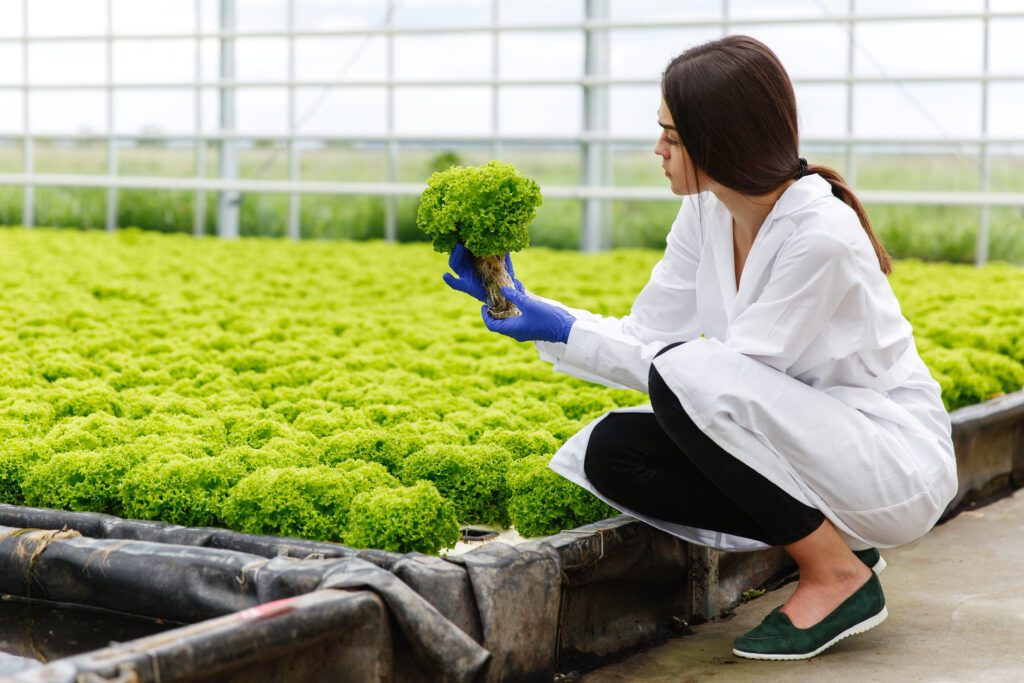
Hydroponics has gained popularity in recent years as a sustainable and efficient method of growing plants. Along with its numerous benefits, such as water conservation and limited space requirements, there has been a growing interest in understanding the nutritional value of hydroponics-grown plants.
Studies have shown that hydroponic cultivation can indeed produce plants with comparable or even superior nutritional value to conventionally-grown counterparts. For instance, a study published in the Journal of Agricultural and Food Chemistry found that certain hydroponic crops, such as lettuce and spinach, contained higher levels of vitamins and minerals when compared to conventionally-grown samples. This is due to the controlled environment in which hydroponics functions, allowing for precise nutrient delivery directly to the plant roots, resulting in optimal nutrient uptake and absorption. Moreover, hydroponics also eliminates the need for chemical pesticides and herbicides, which can further enhance the nutritional quality of the plants.
As the demand for organic and nutritious food continues to rise, understanding the nutritional benefits of hydroponics-grown plants becomes increasingly relevant. Hydroponics allows for enhanced control over the growth conditions, enabling the production of plants with improved nutritional profiles. Whether it is the higher levels of vitamins and minerals or the absence of harmful chemicals, hydroponics presents a promising solution for those seeking to incorporate healthier and more sustainable options into their diets.
Water Usage and Conservation in Aquaponics
Aquaponics is a sustainable agricultural system that combines aquaculture (the cultivation of fish or other aquatic animals) and hydroponics (the cultivation of plants in water without soil) in a symbiotic environment. One of the key benefits of aquaponics is its efficient use of water. Compared to traditional soil-based agriculture, aquaponics uses up to 90% less water. This is because the water is recirculated through the system, with the majority of it being absorbed by the plants and then filtered back to the fish. Any excess water loss is minimized through evaporation and transpiration from the plants. With water scarcity becoming a growing concern, aquaponics presents an innovative and sustainable solution for conserving this precious resource.
In addition to minimizing water usage, aquaponics also helps to conserve water through its closed-loop system. Unlike traditional farming methods where water is often lost through runoff or drainage, aquaponics ensures that water is continually recycled and reused within the system. This not only reduces the overall water consumption but also prevents the contamination of nearby water sources through nutrient-rich runoff. With increasing pressures on water resources globally, the water conservation benefits of aquaponics make it an attractive option for sustainable agriculture.
Around the world Aquaponics table given below
| Row/Column | 1 (North) | 2 (East) | 3 (South) | 4 (West) |
|---|---|---|---|---|
| Row 1 | Seedling | Healthy | Blooming | Harvested |
| Row 2 | Growing | Fertilize | Pruning | Ready |
| Row 3 | Flowering | Harvested | Rotating | Growing |
| Row 4 | Ready | Healthy | Blooming | Harvested |
Note:
- Symbiotic Ecosystem: Aquaponics creates a symbiotic relationship between fish and plants, where fish waste provides nutrients for plant growth, and plants filter and purify the water for the fish.
- Water Conservation: This method significantly reduces water usage compared to traditional soil-based agriculture, as the water circulates in a closed-loop system, minimizing waste and evaporation.
- Integrated Nutrient Cycling: Nutrients from fish waste are converted into a form that plants can absorb, promoting a natural and efficient nutrient cycle. This eliminates the need for synthetic fertilizers in plant cultivation.
- Year-Round Cultivation: Aquaponics allows for year-round cultivation, as it can be operated indoors or in controlled environments. This provides a consistent and reliable supply of fresh produce regardless of external weather conditions.
- Environmental Sustainability: By combining aquaculture and hydroponics, aquaponics promotes sustainable farming practices with minimal environmental impact, reducing the use of chemical inputs and mitigating soil degradation.
Water Usage and Conservation in Hydroponics
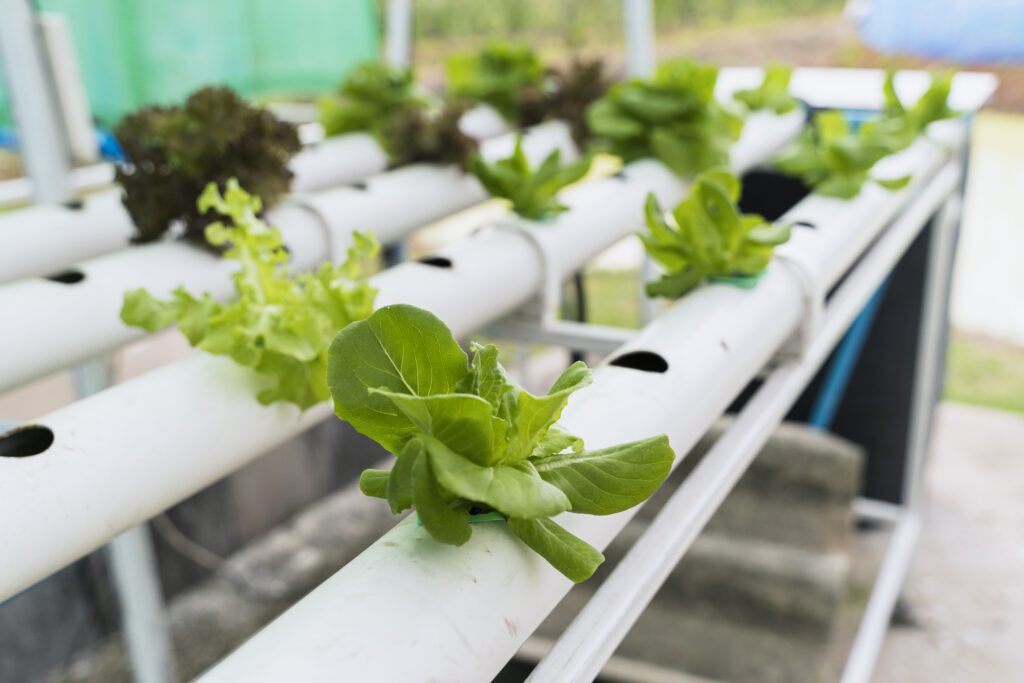
Hydroponics is a method of growing plants without soil, using nutrient-rich water. One of the key advantages of hydroponics is its efficient water usage and conservation practices. Compared to traditional soil-based agriculture, hydroponics utilizes significantly less water. In hydroponic systems, water is recirculated, minimizing waste and maximizing the use of this valuable resource.
Through the use of advanced techniques such as drip irrigation or nutrient film technique (NFT), hydroponic systems deliver water directly to the roots of the plants, ensuring that every drop is utilized effectively. This targeted approach eliminates the need for excessive watering and reduces the risk of water loss through evaporation. Additionally, the closed-loop systems often used in hydroponics help to minimize water loss through runoff. By continuously monitoring and adjusting the nutrient-rich water levels, growers can maintain optimal growing conditions while conserving water resources.
Pest and Disease Control in Aquaponics
Effective pest and disease control is paramount to maintain a thriving aquaponics system. The unique combination of aquaculture and hydroponics in aquaponics creates an environment that can be prone to certain pests and diseases. The key to managing these challenges lies in preventive measures and holistic approaches.
To prevent pests and diseases from infiltrating your aquaponics system, it is essential to establish stringent quarantine procedures. This involves thoroughly inspecting any new plants, fish, or equipment before introducing them to the system. Quarantine tanks can be set up to isolate new additions and monitor them closely for any signs of pests or diseases. Additionally, maintaining proper water quality, temperature, and nutrient balance can help prevent the onset of problems. Regularly monitoring the system, checking the leaves and stems of plants for signs of damage or infestation, and promptly addressing any issues that arise can go a long way in preventing the spread of pests and diseases.
In the unfortunate event that pests or diseases do make their way into your aquaponics system, swift action is crucial to prevent further damage. Implementing biological control measures such as introducing beneficial insects or predatory fish can help control pests naturally. Using organic or natural pest control methods is recommended in aquaponics systems to avoid any harmful effects on the fish and plants. Additionally, maintaining a clean and hygienic system by regularly removing debris, dead plants, and excess organic matter can help reduce the likelihood of pest and disease outbreaks. By staying vigilant and proactive in managing pest and disease control, aquaponic gardeners can ensure the long-term success of their systems and enjoy healthy, vibrant plants and fish.
Pest and Disease Control in Hydroponics
Pest and disease control in hydroponics is a crucial aspect of successful cultivation. By harnessing the power of this soil-less farming method, growers can enjoy higher yields and faster growth rates. However, just like with any form of agriculture, the presence of pests and diseases can pose significant challenges.
To effectively manage pests in hydroponics, it is essential to implement preventive measures. This includes maintaining a clean and sterile growing environment. Regularly disinfecting equipment, ensuring proper ventilation, and maintaining optimal nutrient levels can help prevent pest and disease infestations. It’s also advisable to introduce beneficial insects, such as ladybugs or lacewings, which act as natural predators to control common pests like aphids or whiteflies. By adopting biological controls and implementing integrated pest management strategies, hydroponic growers can minimize the need for harmful chemical pesticides while effectively managing pest populations.
Remember, a proactive approach to pest and disease control is key in hydroponics. Regular monitoring, careful observation, and quick action are vital to nip any potential problems in the bud. Stay tuned for the next section, where we will explore pest and disease control in aquaponics – another exciting soil-less farming technique that combines aquaculture and hydroponics. Keep reading to discover the similarities and differences in pest and disease management between these innovative methods!
Cost Analysis: Aquaponics vs Hydroponics
Aquaponics and hydroponics are both innovative and efficient methods of gardening that are gaining popularity among gardening enthusiasts. When it comes to cost analysis, it is important to consider the initial setup cost, as well as the ongoing expenses and potential returns on investment.
Aquaponics systems typically have a higher initial cost compared to hydroponics systems. This is primarily due to the need for additional components such as fish tanks, filters, and pumps to maintain the symbiotic relationship between fish and plants. However, it is worth noting that aquaponics systems can also generate income through the sale of fish, making them potentially more financially viable in the long run.
On the other hand, hydroponics systems have a lower initial cost since they do not require the same level of equipment and infrastructure as aquaponics. However, the ongoing expenses of hydroponics, such as purchasing and maintaining nutrient solutions, can add up over time. Additionally, hydroponic systems may require regular replacement of grow media, which can contribute to the overall cost.
Ultimately, the cost analysis of aquaponics versus hydroponics will depend on various factors such as scale, location, and intended use. It is advisable for gardening enthusiasts to carefully evaluate their budget and goals before making a decision. By considering the initial setup cost, ongoing expenses, and potential returns, individuals can make an informed choice that suits their needs and resources.
Considerations for Choosing Between Aquaponics and Hydroponics
Aquaponics and hydroponics are both innovative methods of cultivation that offer unique benefits to gardening enthusiasts. When considering which system to choose, there are several key factors to take into account.
First and foremost, it is crucial to consider your specific goals and needs as a gardener. Aquaponics utilizes a symbiotic relationship between fish and plants, where the fish waste provides essential nutrients for the plants to thrive. This system not only allows for the cultivation of fresh produce but also provides a sustainable source of fish. Hydroponics, on the other hand, relies on a nutrient-rich water solution to nourish the plants directly, eliminating the need for soil. This can be particularly advantageous for individuals looking to grow crops in environments with limited access to fertile soil.
Another factor to consider is the level of complexity and maintenance required by each system. Aquaponics, with its integration of fish, may require additional knowledge and care to ensure the well-being of both plants and aquatic life. Hydroponics, although simpler in terms of the overall setup, still demands regular monitoring and adjustment of nutrient levels to optimize plant growth.
The space available for cultivation is also an important consideration. Aquaponics systems usually require more space due to the inclusion of fish tanks or other aquatic components. Hydroponics, on the other hand, can be more space-efficient as it solely focuses on plant cultivation. This makes hydroponics an attractive option for urban gardeners or those with limited outdoor areas.
Furthermore, it is essential to evaluate the cost implications of each system. Aquaponics may require a larger initial investment due to the need for fish tanks, filtration systems, and pumps. Hydroponics, although generally more affordable to set up, may incur ongoing costs for nutrient solutions and equipment maintenance.
Ultimately, the decision between aquaponics and hydroponics should be based on your individual circumstances and preferences. Considerations such as your goals, available space, level of maintenance desired, and financial considerations can help guide you towards the system that best suits your needs. By carefully weighing these factors, you can embark on an exciting and rewarding journey into the world of soilless cultivation.
to know more about Hydroponics watch the vedio below
What are the main differences between aquaponics and hydroponics?
Aquaponics combines aquaculture (fish farming) with hydroponics (growing plants in water), while hydroponics solely focuses on growing plants in water.
How does aquaponics work?
Aquaponics works by creating a symbiotic relationship between fish and plants. The fish waste provides nutrients for the plants, and the plants filter the water for the fish.
What are the benefits of hydroponics?
Hydroponics offers precise control over nutrient delivery, faster growth rates, no soil-borne diseases, and the ability to grow plants in limited spaces.
How does hydroponics impact the environment?
Hydroponics reduces water usage and eliminates the need for soil, which can help conserve land resources and prevent soil erosion.
Are aquaponics or hydroponics more environmentally friendly?
Both aquaponics and hydroponics have environmental benefits. Aquaponics uses less water, recycles nutrients, and reduces the need for synthetic fertilizers, while hydroponics conserves land resources and eliminates soil-borne diseases.
Are plants grown through aquaponics more nutritious?
Aquaponics-grown plants tend to have higher nutrient content as they receive organic nutrients from fish waste, leading to enhanced flavors and potentially increased nutritional value.
How does pest and disease control work in aquaponics?
In aquaponics, pests and diseases can be controlled by maintaining a balanced ecosystem, introducing beneficial insects, and regularly monitoring and removing any affected plants.
What about pest and disease control in hydroponics?
Hydroponics allows for easier pest and disease control compared to traditional soil-based cultivation. It involves implementing integrated pest management strategies, including the use of beneficial insects and strict hygiene practices.
Which system, aquaponics or hydroponics, is more cost-effective?
The cost-effectiveness of aquaponics or hydroponics depends on various factors such as initial setup costs, operational costs, and market demand. Conducting a thorough cost analysis specific to your circumstances is recommended for an accurate comparison.
What factors should be considered when choosing between aquaponics and hydroponics?
Some factors to consider include the availability of resources (space, water, and electricity), desired plant and fish varieties, market demand, skill level, and personal preferences regarding sustainability and environmental impact.

Suyash Dhoot, editor at SouthElMonteHydroponics.com, is a pioneering force in hydroponics. His expertise spans nutrient solutions and cutting-edge technology. Through meticulous editing, he elevates the site to a beacon of knowledge, offering invaluable insights. Dhoot’s dedication shapes a greener, more efficient future for agriculture.


